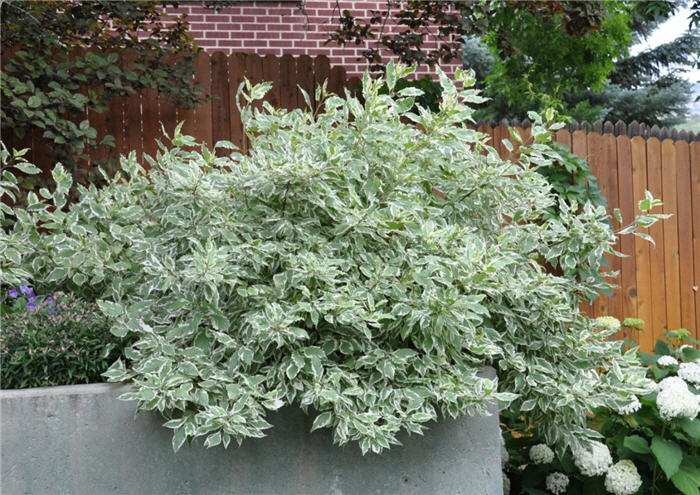| Botanical Name: Cornus alba 'Bailhalo' | |
| Common Name: Ivory Halo Dogwood |

-
Anatomy
-
Culture
-
Design
Plant Type
Shrub
Height Range
3-6'
Flower Color
White
Flower Season
Spring
Leaf Color
Grey Green, Light Green, White, Variegated
Bark Color
Red
Fruit Color
Blue
Fruit Season
Summer, Fall
Sun
Full, Half, Shade
Water
Medium
Growth Rate
Moderate
Soil Type
Clay, Loam, Rocky
Soil Condition
Average, Rich, Well-drained, Moist
Soil pH
Acid, Neutral, Basic
Adverse Factors
n/a
Design Styles
English Cottage, Formal, Woodland
Accenting Features
Showy Flowers, Specimen, Unusual Foliage
Seasonal Interest
Winter, Spring, Summer, Fall
Location Uses
Background, Shrub Border, Foundation, Walls / Fences
Special Uses
Cut Flowers, Hedge, Screen, Mass Planting, Small Spaces
Attracts Wildlife
Birds
Information by: Stephanie Duer
Photographer:
Photographer:
-
Description
-
Notes
Ivory Halo is a smaller version of variegated dogwood, growing about 5 to 6 feet tall and wide, wide a compact rounded habit. Leaves are light green and white, and red in the fall. Bark is red and provides wonderful winter interest, especially when planted infront of evergreens or solid fences. It produces white flowers in late spring, which are followed by blue-white berries. Use in the shrub or foundation border, and combines effectively cotoneaster, hydrangea, spirea, viburnum, and wiegala.
Grow in loamy, well drained soils in partial to full shade. Though it can grow in full sun, the leaves can get scorched and it will need more water. If you use it at the foundation, place it on the east or north side. Does not require pruning to keep its shape, though pruning back hard late winter to early spring will encourage new wood, which is more brightly colored, and keep the size more compact (see Guides for pruning tips). Variegated foliage is susceptible to damage from hot sun.